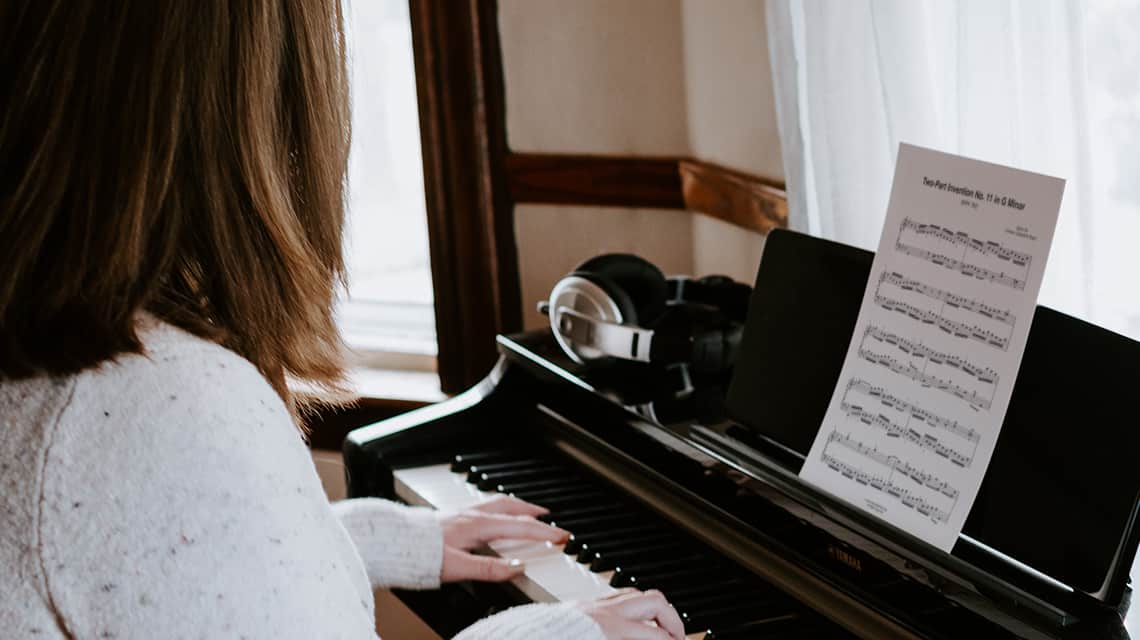How to Help Your Students Fall in Love with Classical Piano

Classical music has a way of drawing people to the piano. Once a student experiences its beauty, its richness and its intricacies, it’s natural to want more. Classical music is challenging yet satisfying to learn.
But, piano teachers are often faced with the challenge of how to find an entry point for students with classical music. Even though many of us appreciate the value of studying classical music, it can be difficult to get piano students on board. Students may perceive classical music as boring, too formal or unapproachable.
Here are four ways to help your piano students fall in love with classical music:
1. Use The Pianists Guide To Standard Teaching and Performance Literature to find music at just the right level.
This book is an invaluable resource for piano teachers and deserves a place in every piano studio. You can buy the book here and read a full review of it here.

One of the biggest challenges with teaching classical music is that it’s challenging to match the level of the music with the level of the student.
A common problem is to assign classics that are simply too difficult for the student. It may seem like a good idea to challenge the student and to present music as a huge learning opportunity. But, if a student does not already possess the essential technical skills, discipline and problem-solving skills needed to learn a difficult piece, it can easily turn into a huge frustration and a deterrent from learning other classical pieces.
Every piano teacher has had requests for Moonlight Sonata, Clair De Lune, Für Elise and other challenge pieces from students who are simply not ready to learn them.
Rather than trying to tackle something too complicated, use other similar easier classics as a stepping stone to learning more difficult music.

The Pianists Guide To Standard Teaching And Performance Literature examines nearly every intermediate piano piece from Baroque to 20th Century and places it in a level from 1-10.
These levels don’t necessarily correspond with method book leveling systems, so the teacher will need to establish a baseline. Find a classical piece the student has already accomplished or work through a few lower-level pieces to find just the right amount of challenge. Once you’ve established the student’s level, you can flip through the book to find tons of other suggested pieces at the same level.
This will set your students up for success by guaranteeing that they always have music that they can play well and learn in a reasonable amount of time. Then, you can help them move through each level and work towards playing more difficult pieces on their bucket list.
2. Tell stories of composers and help them get to know composers through their music.
It’s easy to lump all of classical music into a category of old, stuffy music that all seems the same. But, even a brief exploration of music history will quickly help students see that each piece of classical music was written by a unique, interesting person from the past.

Each composer has a distinct personality, a motivation for writing music, and special gifts that make their music stand out. All of these things can be heard through their music, and once a student knows what to listen for, it can become very fulfilling to get to know these real people from the past by studying their music.
- Haydn had a great sense of humor, and there are plenty of examples of his humor shining through his music.
- A quick exploration of the role of dancing in Baroque times will make Baroque dance suites come to life.
- Reading stories of Beethoven’s complex personality bring to light the many emotions that are reflected in his music.
These are just a few distinguishing observations about composers, but as you share classical with your music, search for the interesting, quirky, and notable stories that accompany the music. Teach your students to follow composers in the way they would follow characters of a sitcom or celebrities of today.
3. Tap into your students’ interests and personality to find a relatable composer.
On a similar note, different composers seem to resonate with different students. Tap into the unique traits and interests of your own students and find composers who they can relate with.
- Is your student traveling to a new place soon? Find a composer from that location and learn their music.
- Does your student have a gift for art? Find music that depicts your student’s artwork or the correlates with your student’s favorite artist.
- Is your student interested in musical theater? Explore works from ballets and operas that might excite a student who really understands what goes into a huge production.
- Is your student strong in math? Show them the mathematical patterns found in Bach’s music.
- Is your student introspective and expressive? Discover the Romantic and Impressionist composers.
This list could go on and on. The key is to not assume that every student is interested in the same music. Classical music is an expansive genre of music, and there is something for everyone.
4. Encourage students to try new music, and know when it’s time to move on.
Sometimes students need to be reminded to be open to new things. Students often need encouragement to try things and classical music is no different.

It’s common for music that was once resisted to become a favorite. Once a student experiences the entire learning process and can perform the finished product, they are more likely to enjoy what once seemed intimidating, too complicated, or just uninteresting.
As teachers, it’s also important to know when it’s time to move on from something that isn’t right for a student. Not every piece has to be learned to completion. If a student isn’t finding fulfillment and motivation from the selected repertoire, it might be time to find something different.
If your student needed an extra push to start learning a classic, there’s a chance they could take off with it or, they might not. Accept that either option is okay and be willing to move in any direction.
We hope these tips have been helpful to you in the introduction of classical music to your piano students! And don’t forget to get all of your classical piano sheet music at musicnotes.com.

